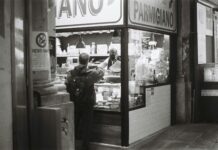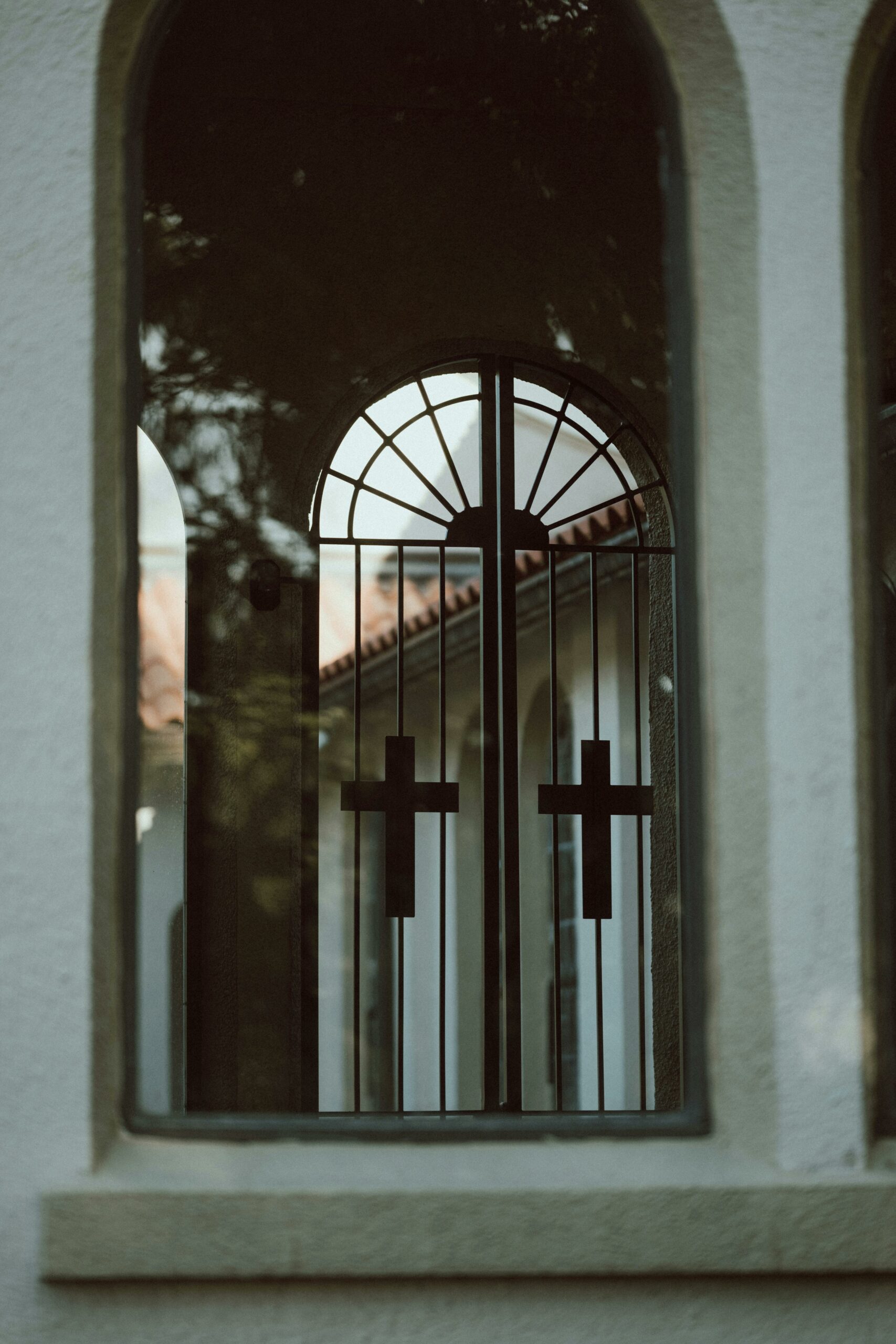If you’re curious about the Holy Family Church Duxbury Massachusetts, you’re in for a fascinating journey. This historic church is not just a place of worship but a treasure trove of rich stories and architectural beauty that captures the heart of Duxbury’s community. Ever wondered what makes the Holy Family Church in Duxbury so special? From its humble beginnings to its role in local traditions, this church has witnessed decades of history unfold right within its walls. Discover its rich history today and see why it remains a beloved landmark for both residents and visitors alike.
Nestled in the charming town of Duxbury, Massachusetts, the Holy Family Church Duxbury stands as a testament to faith, resilience, and community spirit. With its stunning Gothic architecture and serene atmosphere, the church invites you to step back in time and explore a piece of New England’s cultural heritage. But did you know that the church has been central to many significant events and celebrations in the area? Whether you’re a history buff, a religious pilgrim, or simply someone seeking inspiration, learning about the Holy Family Church Duxbury Massachusetts will surely enrich your visit.
So, what exactly makes the Holy Family Church Duxbury Massachusetts a must-see destination? Beyond its beautiful stained-glass windows and intricate designs lies a story of devotion and community support that has spanned generations. Join us as we uncover the compelling tales, architectural marvels, and ongoing legacy of this iconic church. Ready to dive into the heart of Duxbury’s heritage? Let’s explore the amazing history of the Holy Family Church in Duxbury Massachusetts today!
Unveiling the 7 Most Fascinating Historical Facts About Holy Family Church Duxbury Massachusetts
Unveiling the 7 Most Fascinating Historical Facts About Holy Family Church Duxbury Massachusetts
Holy Family Church Duxbury Massachusetts, is more than just a place of worship. It stands as a testament to the rich cultural fabric and history of the town. Many people around New York and beyond have heard about its beauty, but few truly understand the stories and heritage it holds within its walls. Today, we dive into discovering its rich history and unearth seven of the most fascinating facts about this iconic church.
1. Founded in the Early 20th Century with a Vision
The Holy Family Church was founded in the early 1900s, a period when Duxbury was transforming from a maritime town to a more suburban community. The founders had a vision to create a spiritual sanctuary for the growing Catholic population. It opened its doors in 1914, and since then it has been a cornerstone for its parishioners.
- Year Established: 1914
- Purpose: Serve Catholic families in Duxbury area
- Founders: Local community leaders and clergy
This foundation period is significant because it reflects the immigration patterns and demographic changes in Massachusetts during that era.
2. Unique Architectural Style Blends Gothic and Colonial Influences
Unlike many other churches in Massachusetts, Holy Family Church Duxbury Massachusetts showcases a unique blend of Gothic and Colonial architectural elements. The pointed arches and stained glass windows are typical of Gothic design, while the clean lines and symmetrical facade hint at Colonial styles.
Comparison Table: Architectural Features
| Feature | Gothic Style | Colonial Style | Holy Family Church |
|---|---|---|---|
| Arches | Pointed | Rounded | Pointed |
| Windows | Stained glass, intricate | Simple panes | Stained glass |
| Facade | Ornate, vertical emphasis | Symmetrical, horizontal | Symmetrical with Gothic touches |
| Materials | Stone | Wood | Brick with stone accents |
This blend make the church stand out among other historic buildings in the region.
3. The Stained Glass Windows Tell Stories of Local Heritage
One of the most captivating features inside the church are its stained glass windows. These windows aren’t just decorative; they narrate stories about the local community, its maritime history, and the immigrant families who established the parish.
For example:
- One window shows a fishing boat, representing Duxbury’s seafaring past.
- Another depicts saints who were patrons of the immigrant groups at the time.
These windows were crafted by artists from Boston, and each took several months to complete.
4. Holy Family Church Survived Major Storms Over the Decades
Duxbury’s coastal location exposes it to harsh weather, and the church has witnessed several major storms. Remarkably, Holy Family Church Duxbury Massachusetts managed to survive the devastating hurricanes of 1938 and 1954 with minimal damage.
- Hurricane of 1938: Known as the Great New England Hurricane, it caused widespread destruction but the church’s sturdy construction protected it.
- Hurricane Carol of 1954: Again, while much of Duxbury suffered, the church remained largely intact.
This resilience highlights the exceptional craftsmanship and materials used during its construction.
5. The Church Played a Role During World War II
During World War II, the church didn’t just serve as a place of worship. It became a community hub for support activities. Parishioners organized fundraisers, care package assemblies for soldiers, and even hosted social events to boost morale.
- Fundraising events raised money for war bonds.
- Volunteer groups met regularly in the church basement.
- Local servicemen were honoured during special masses.
This social role strengthened the bond between the church and the wider Duxbury community.
6. The Church’s Organ is a Historic Musical Treasure
Holy Family Church Duxbury Massachusetts houses an organ that dates back to the 1920s. It is considered a historic musical treasure because of its craftsmanship and sound quality. Many local musicians have praised its rich tones.
- Built by: Aeolian-Skinner Organ Company
- Installed: 1927
- Restorations: Underwent major restorations in 1980s and 2000s
The organ is still used during services and special concerts, preserving an important part of the church’s cultural heritage.
7. The Church Grounds Include a Cemetery with Notable Burials
Adjacent to the church lies a cemetery that holds the remains of many of Duxbury’s founding families. Some graves date back to the early 1900s, offering a glimpse into the town’s past.
Notable burials:
- Members of the Mayflower descendants families.
- Prominent local clergy who served the parish for decades.
- Veterans from both World Wars.
Visitors interested in genealogy
How Holy Family Church Duxbury Massachusetts Became a Landmark of Faith and Community
How Holy Family Church Duxbury Massachusetts Became a Landmark of Faith and Community
Nestled in the charming town of Duxbury, Massachusetts, Holy Family Church stands not just as a place of worship but as a testament to the enduring spirit of its community. For many years, this church has been a beacon of faith, history, and togetherness for locals and visitors alike. But how did Holy Family Church Duxbury Massachusetts become such a landmark? The story is rich, layered, and worth exploring today if you want to understand its true significance.
The Origins of Holy Family Church Duxbury Massachusetts
The roots of Holy Family Church go back to early 20th century, a time when Duxbury was slowly growing from its colonial past into a more modern town. The Catholic population was increasing, yet there was no dedicated parish that could serve the spiritual needs of its members. The decision to establish Holy Family Church came from this very necessity.
Key moments in its early history include:
- Founded in 1918: The parish was officially established to meet the demands of the growing Catholic community.
- Original building: The first church was a modest structure, built with local materials and volunteer help.
- Expansion in the 1950s: As more families settled in Duxbury, the church underwent significant enlargement to accommodate the larger congregation.
This timeline shows how the church evolved not just in size but in its role as a community pillar.
Architectural Features That Tell a Story
Holy Family Church Duxbury Massachusetts is not just any church building; its architecture captures the essence of its time and place. Unlike some grand cathedrals in big cities, this church combines simplicity with elegance.
Here’s what makes its architecture special:
- Gothic Revival style with pointed arches and stained glass windows, which creates a serene interior atmosphere.
- The use of timber and brick, materials readily available in Massachusetts, gives it a warm, inviting look.
- The bell tower, which has become a local landmark, visible from miles around.
- Inside, the altar’s intricate designs reflect both artistic craftsmanship and deep religious symbolism.
Compared to other churches in the region, Holy Family Church balances tradition with a down-to-earth charm that resonates with its parishioners.
The Church’s Role in Community Life
More than bricks and mortar, Holy Family Church Duxbury Massachusetts has always been about people. It has served as a gathering place for families, a venue for celebrations, and a sanctuary in times of hardship.
Some ways the church impacts community are:
- Hosting weekly masses and special religious events such as Christmas and Easter services.
- Running educational programmes for children and adults, including Sunday school and bible study groups.
- Organising charity drives and outreach programmes, helping those in need within Duxbury and neighbouring towns.
- Providing space for community meetings, cultural events, and social gatherings.
This active involvement has helped the church remain relevant and beloved, even as the town and its demographics changed over decades.
Historical Context: Catholicism in Massachusetts
To understand Holy Family Church’s story fully, one must consider the broader history of Catholicism in Massachusetts. The state, once predominantly Puritan, saw waves of Irish, Italian, and other European immigrants during the 19th and 20th centuries, which transformed the religious landscape.
Important facts include:
- Massachusetts had faced anti-Catholic sentiment in the 1800s, which made establishing churches challenging.
- By the early 1900s, Catholic parishes like Holy Family began flourishing in suburban areas.
- The church’s founding in 1918 coincided with a period of religious acceptance and increased diversity in the state.
This background helps explain why Holy Family Church was more than just a building — it represented hope, identity, and resilience for many families.
Comparing Holy Family Church to Other Local Landmarks
When people think of landmarks in Duxbury, they might recall the historic homes or the waterfront. However, Holy Family Church holds a unique place because it combines historical, cultural, and spiritual significance.
Here’s a quick comparison:
| Landmark | Established | Significance | Community Role |
|---|---|---|---|
| Myles Standish Burial Ground | 1638 | Oldest cemetery in the US | Historical tourism |
| Alden House Museum | 1889 | Home of early settler John Alden | Educational tours |
| Holy Family Church | 1918 | Religious, cultural, and community hub | Active parish and social centre |
While other landmarks celebrate Duxbury’s colonial past, Holy Family Church captures the 20th-century evolution of the town’s social fabric.
Practical Examples of Community Engagement
The church doesn’t just preach community — it practices it. Some practical examples of how Holy Family Church Duxbury Massachusetts makes a difference include:
- Annual Food Drive: Collecting hundreds of
Exploring the Architectural Marvels of Holy Family Church in Duxbury Massachusetts: A Visual Journey
Exploring the Architectural Marvels of Holy Family Church in Duxbury Massachusetts: A Visual Journey
Holy Family Church in Duxbury Massachusetts stands as one of the most captivating religious landmarks in the region. This church, with its rich history and stunning architectural design, attracts visitors not only from nearby towns but also from far beyond. Many people might pass by without realizing the depth of cultural and historical significance embedded within its walls. So, why not take a moment to explore what makes this church so extraordinary?
A Glimpse into Holy Family Church’s Rich History Today
Holy Family Church was established in the early 20th century, during a time when Duxbury was rapidly growing as a community. The church has served as a spiritual home for generations of parishioners, witnessing both the calm and storms of history. It was founded to cater to the increasing Catholic population in Massachusetts, providing a place for worship, community gatherings, and rites of passage such as baptisms, weddings, and funerals.
- Founded: 1910s (exact year around 1914)
- Location: Heart of Duxbury, Massachusetts
- Original Purpose: Serve Catholic community’s spiritual needs
- Current Status: Active parish with regular services and events
Over the decades, the church has seen many renovations and expansions, but it still maintain its original charm and character. It acts not only as a religious site but also as a historical monument that tells stories of the town and its people.
Architectural Style and Design Elements That Impress
One of the most striking features of Holy Family Church is its architecture. The building blends several styles, most notably Gothic Revival with some Romanesque details. This combination creates a visually stunning effect, invoking awe in visitors. The pointed arches, tall spires, and intricate stained glass windows all contribute to the church’s majestic appearance.
Some key architectural features include:
- Tall steeple reaching towards the sky
- Stained glass windows depicting biblical scenes
- Stone façade crafted from local materials
- Ornate wooden pews and altar inside
- Vaulted ceilings with decorative mouldings
The interior is just as impressive as the exterior, with beautiful craftsmanship evident in every corner. The stained glass, for example, not only adds colour but also tells stories from the Bible, connecting parishioners visually to their faith.
Why Holy Family Church Stands Out Compared to Others
There are many churches in Massachusetts and the greater New England area, but Holy Family Church in Duxbury holds a unique place. Here a quick comparison table to understand this better:
| Feature | Holy Family Church Duxbury | Typical New England Church |
|---|---|---|
| Architectural Style | Gothic Revival + Romanesque | Mostly Colonial or Georgian |
| Age | Over 100 years | Often older but simpler |
| Stained Glass Quality | Highly detailed and vibrant | Varies, often less intricate |
| Community Role | Active, large parish community | Some are historical only |
| Location | Central Duxbury town | Often rural or suburban |
This table shows that Holy Family Church combines historical significance with active community involvement, making it more than just a building. It breathes life and continues to serve modern needs while preserving the past.
A Visual Journey: What to Look For When Visiting
If you ever visit Holy Family Church in Duxbury Massachusetts, here are some practical tips on what to focus your attention on:
- The Main Entrance: Notice the heavy wooden doors, framed by stone carvings that have weathered a century.
- The Stained Glass Windows: Try to spot the window depicting the Holy Family itself—Mary, Joseph, and Jesus—this is the heart of the church’s symbolism.
- The Altar Area: Check out the intricate woodwork and the way natural light filters in during morning services.
- The Steeple: If possible, see it from a distance during sunset. The colours reflecting on the stone create an almost ethereal glow.
- The Bells: The church bells have been ringing for decades, calling parishioners to worship and marking special occasions.
How Holy Family Church Reflects Community Values
The church is not just a symbol of faith but also of community resilience and values. Over the years, it has hosted many events beyond religious services such as charity drives, youth programs, and cultural festivals. The architecture itself reflects a desire to create a space that welcomes all, fostering unity and belonging.
Practical examples of its community impact include:
- Annual Christmas and Easter celebrations drawing large crowds
- Hosting local food bank collections and support groups
- Educational workshops on local history and art
The Importance of Preserving Such Historical Sites
With the fast pace of modern life and urban development, historic buildings like Holy Family Church face threats of neglect or demolition. It’s important that efforts
Why Holy Family Church Duxbury Massachusetts Is a Must-Visit for History and Culture Enthusiasts
Why Holy Family Church Duxbury Massachusetts Is a Must-Visit for History and Culture Enthusiasts
Nestled in the charming town of Duxbury, Massachusetts, Holy Family Church stands as a beacon for those who loves to dive deep into history and culture. This church, with its storied past and architectural beauty, attracts visitors from all around, not just the locals. If you’re someone who enjoys exploring sites that offer more than just visual appeal, Holy Family Church Duxbury Massachusetts has plenty to offer that might surprise you. It’s more than just a place of worship; it’s a living chapter of American religious and cultural heritage.
The Historical Significance of Holy Family Church Duxbury Massachusetts
Holy Family Church was established in early 20th century, but its roots in the community stretch even farther back. The church was founded to serve the growing Catholic population in Duxbury, a town already rich with colonial history dating back to the 1600s. Unlike many other churches built in the area, Holy Family was designed with a distinct architectural style that blends traditional New England elements with European influences brought by immigrant parishioners.
Here’s a quick overview of its historical timeline:
- 1910: Groundbreaking and initial construction of the church building
- 1912: Official opening and first mass held
- 1930s: Major renovations to accommodate a larger congregation
- 1950s: Addition of stained glass windows sourced from European artisans
- 1980s: Restoration project to preserve original woodwork and stone facade
- 2000s: Modern upgrades while maintaining historic integrity
This timeline shows how the church evolved over time, reflecting broader changes in the community and religious practices.
Architectural Features That Tell a Story
One of the biggest draws for visitors is Holy Family Church’s unique architecture. Unlike many modern churches which favour minimalism, Holy Family Church boasts a rich, ornate design. The structure features:
- Gothic Revival style pointed arches
- Intricate stained glass windows depicting biblical scenes and local history
- Hand-carved wooden pews and altar
- A bell tower that has been in use since the church’s founding
Visitors often remark how these features create a sense of stepping back in time, allowing them to appreciate craftsmanship that is rarely found in newer buildings. The stained glass, especially, isn’t just decorative. It tells stories from the Bible and incorporates symbols relevant to Duxbury’s early settlers, connecting religious faith with local heritage.
Cultural Events and Community Role
Holy Family Church isn’t just a static monument; it remains an active hub for cultural and community activities. Throughout the year, it hosts various events that celebrate both religious traditions and local culture. These events include:
- Seasonal festivals, like Christmas and Easter celebrations with traditional music and pageants
- Art exhibits featuring local artists inspired by spiritual themes
- Educational workshops on the history of Catholicism in Massachusetts
- Community outreach programmes that engage with Duxbury’s diverse population
This active role makes the church a living part of the community’s cultural fabric. People visiting can experience more than just architecture—they get a glimpse of how faith and culture intermingle in everyday life.
Comparing Holy Family Church with Other Historic Churches in Massachusetts
Massachusetts is home to many historic churches, but Holy Family Church Duxbury stands out for several reasons:
| Church Name | Year Established | Architectural Style | Notable Features | Location |
|---|---|---|---|---|
| Holy Family Church | 1910 | Gothic Revival | Stained glass, bell tower, wood carvings | Duxbury |
| Old North Church | 1723 | Georgian | Famous for its role in the American Revolution | Boston |
| Trinity Church | 1877 | Richardsonian Romanesque | Massive stonework, murals, stained glass | Boston |
| St. Joseph’s Church | 1885 | Gothic Revival | Large congregation, historic pipe organ | Salem |
While Old North Church is well-known for its revolutionary significance, Holy Family Church offers a more intimate glimpse into immigrant and local religious life during the 20th century. Its blend of styles and community focus makes it unique compared to the more widely visited Boston churches.
Practical Tips for Visiting Holy Family Church Duxbury Massachusetts
If you decide to explore Holy Family Church, here are some practical pointers to make the most of your visit:
- Best time to visit: Weekdays in the morning or early afternoon when it’s less crowded
- Guided tours: Available by appointment, highly recommended to learn detailed history
- Photography: Allowed but be respectful during services or events
- Nearby attractions: Duxbury Beach, Myles Standish State Forest, and historic homes of the Plymouth Colony
- Accessibility:
Discover Hidden Stories and Traditions of Holy Family Church in Duxbury Massachusetts Today
Holy Family Church in Duxbury, Massachusetts, is more than just a place of worship; it is a treasure trove of hidden stories and traditions that many locals and visitors hasn’t fully explored yet. Nestled in the heart of Duxbury, this church has served its community for decades, witnessing a rich history that intertwines faith, culture, and local heritage. If you ever been curious about the roots and unique customs surrounding Holy Family Church, now is a good time to dive into its fascinating past and discover what makes it so special.
The Origins of Holy Family Church Duxbury Massachusetts
Holy Family Church was established in the early 20th century, built to serve a growing Catholic community in the Duxbury area. The exact year was 1927, when the parish officially opened its doors. Before that, many families had to travel to neighbouring towns for their religious ceremonies and services. The church was designed in a traditional Gothic Revival style, which was popular at that time, featuring pointed arches, stained glass windows, and a towering steeple that still dominates the local skyline today.
- Founded: 1927
- Architectural Style: Gothic Revival
- Location: Duxbury, Massachusetts
- Initial Purpose: Serving Catholic families in the expanding town
One interesting thing is that the church was built largely by volunteer parishioners, which show the strong community bonds and dedication. Many of the families who helped construct the church passed down stories about the early days, including how they raised funds and gathered materials with limited resources.
Unique Traditions and Customs at Holy Family Church
Holy Family Church is known for preserving some very unique religious traditions that you might not find in other parishes in Massachusetts. These include special feast day celebrations, local saint commemorations, and cultural events that blend the diverse backgrounds of the congregation.
Here are some notable traditions:
- The Feast of the Holy Family: Celebrated every December with a special mass followed by a community potluck, it brings together people from all walks of life to share food and stories.
- Annual May Crowning Ceremony: A longstanding custom honouring the Virgin Mary, where children of the parish crown a statue of Mary with fresh flowers.
- The Easter Vigil Fire: On Holy Saturday evening, the churchyard is lit with a large bonfire symbolising the resurrection of Christ, a tradition that’s been carried on for over 50 years.
- Cultural Heritage Sundays: Once a month, the church hosts services and events highlighting the different ethnic backgrounds of its members, such as Irish, Italian, and Polish traditions.
These traditions not only enrich the spiritual experience but also create a sense of belonging and continuity among parishioners. It’s a living history, still active and evolving.
Historical Anecdotes You Might Not Know
Many people visiting Holy Family Church do not realise the depth of stories hidden within its walls. For example, during World War II, the church served as a gathering point for local families sending off their loved ones to war. It was a place of solace and hope amid uncertainty.
Another tale is about the stained glass windows, which were donated by various families in memory of their relatives. Each window tells a different story, from depictions of saints to scenes from the Bible, making the church almost like a gallery of personal and religious history.
Comparing Holy Family Church to Other Churches in the Region
When you compare Holy Family Church to other religious sites in the New England area, it stands out because of its intimate community feel and the way it preserves traditions. Unlike some larger cathedrals that focus more on grandeur, Holy Family Church is more about personal connections and local history.
Comparison Table:
| Aspect | Holy Family Church, Duxbury | Typical Large Cathedral |
|---|---|---|
| Community Size | Small to Medium | Large |
| Architectural Style | Gothic Revival | Various (often Gothic or Romanesque) |
| Tradition Emphasis | Local customs and feasts | Formal liturgical practices |
| Historical Role | Community hub during war | Regional religious centre |
| Volunteer Involvement | High (construction and events) | Moderate to Low |
This table shows that while it might not be the biggest or most famous church, Holy Family Church holds a unique place in the hearts of its community through its traditions and stories.
Visiting Holy Family Church: What To Expect
If you decide to visit Holy Family Church in Duxbury, expect a warm welcome and a chance to explore not only its beautiful architecture but also its rich heritage. Services are held regularly, but visitors can also attend special events like the May Crowning or the Easter Vigil to experience its traditions firsthand.
Practical Tips:
- Check the church’s website or bulletin for upcoming feast days and special events.
- Take a guided tour if available, or ask parishioners about the history and stories behind the church’s features.
- Stop
Conclusion
In summary, Holy Family Church in Duxbury, Massachusetts stands as a vibrant center of faith, community, and history. From its welcoming congregation and dedicated clergy to its meaningful worship services and diverse outreach programs, the church offers a spiritual home for individuals and families alike. Its commitment to fostering a strong sense of community, supporting charitable causes, and preserving its rich heritage makes it a cornerstone of the Duxbury area. Whether you are seeking a place for worship, opportunities to volunteer, or simply a peaceful environment for reflection, Holy Family Church warmly invites you to join its parish family. Experience firsthand the warmth and devotion that define this cherished institution. For those looking to deepen their faith or get involved in a caring community, visiting Holy Family Church could be the meaningful next step on your spiritual journey.






